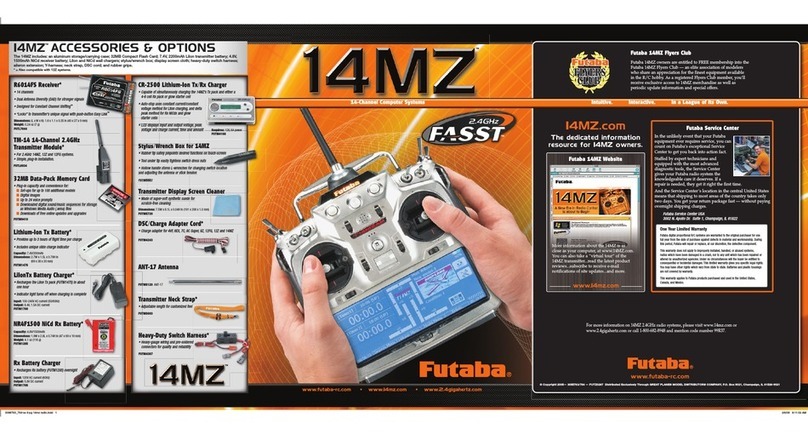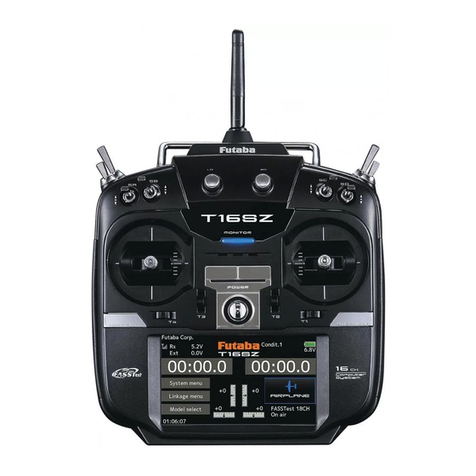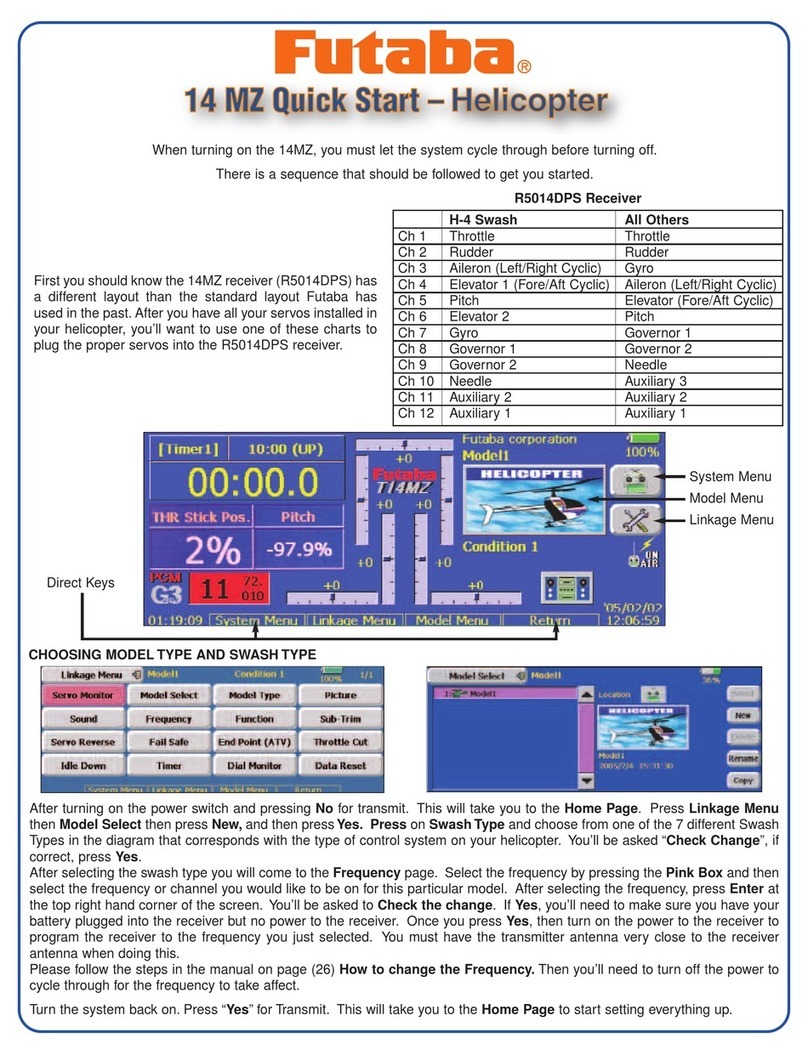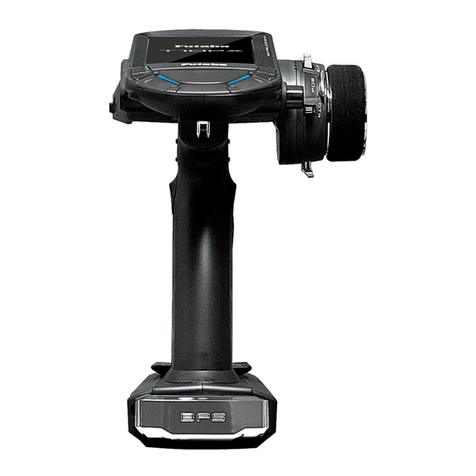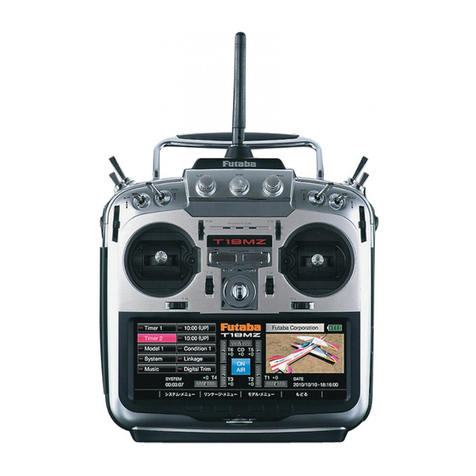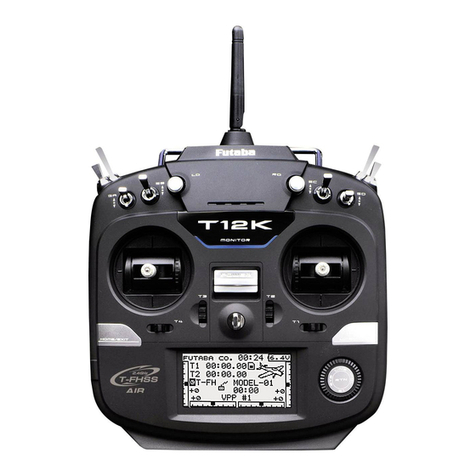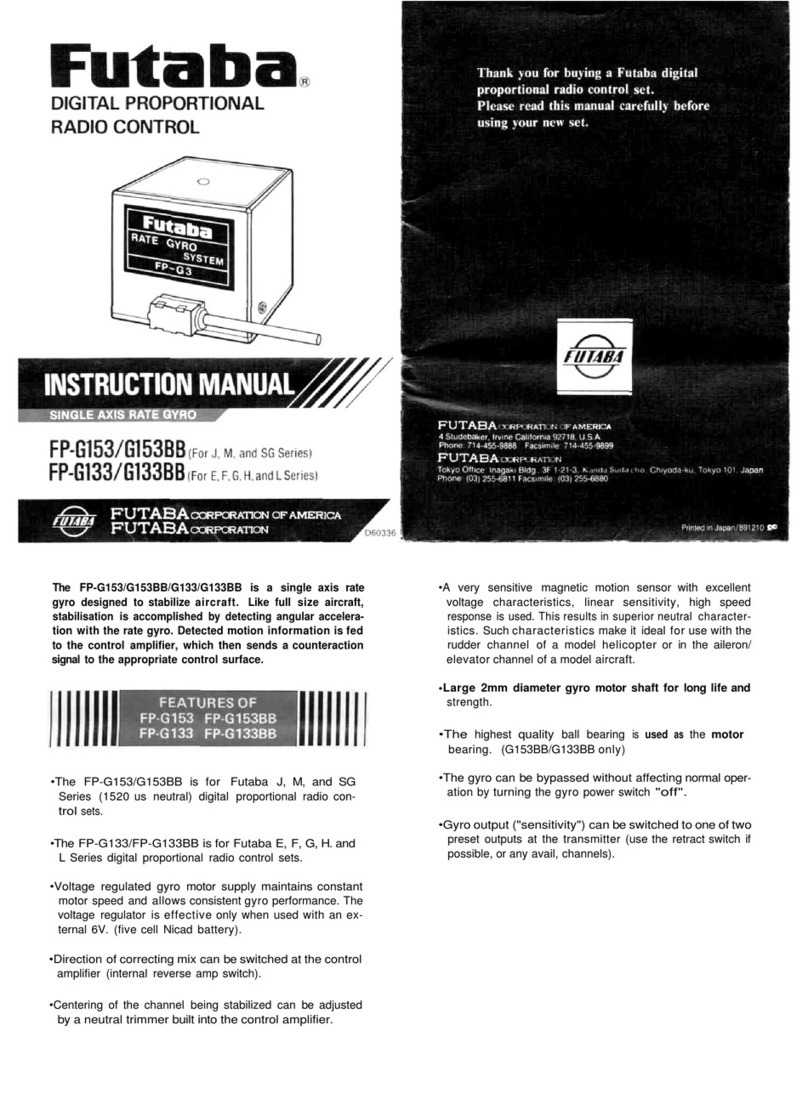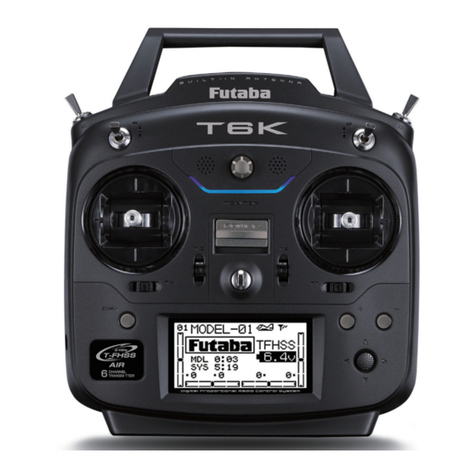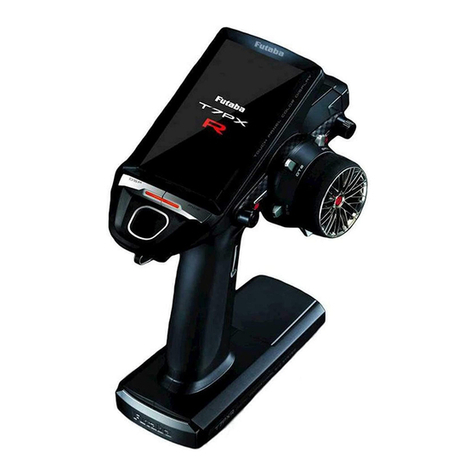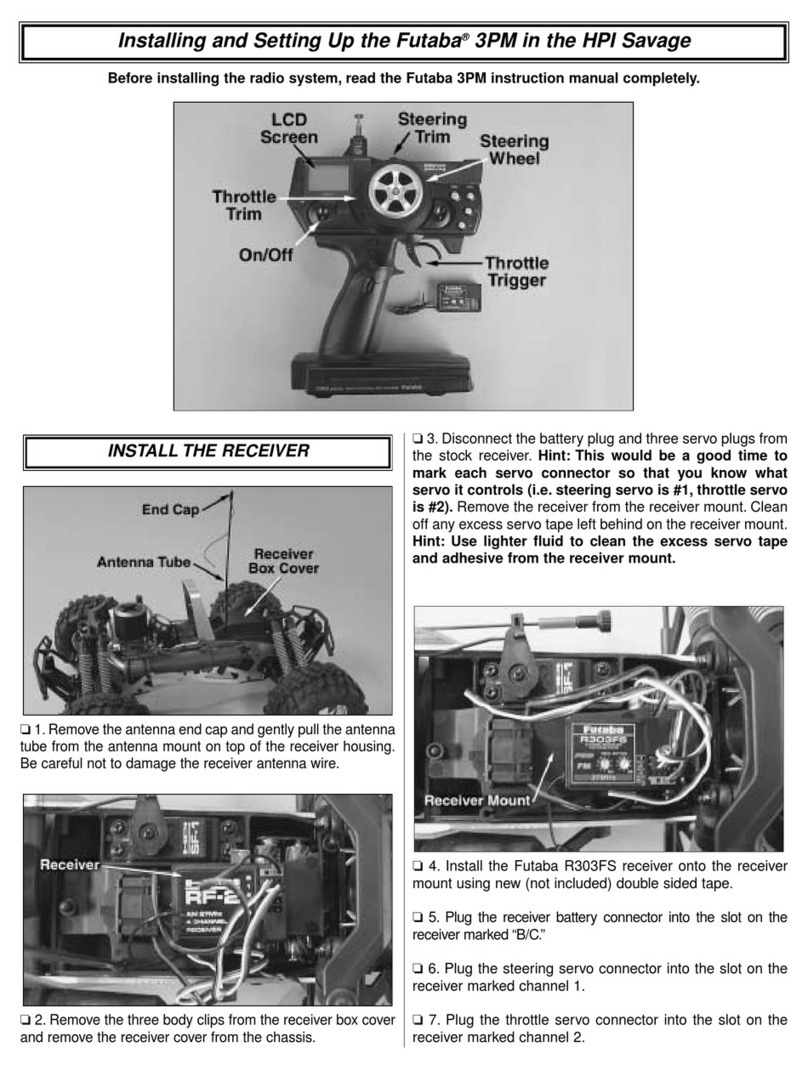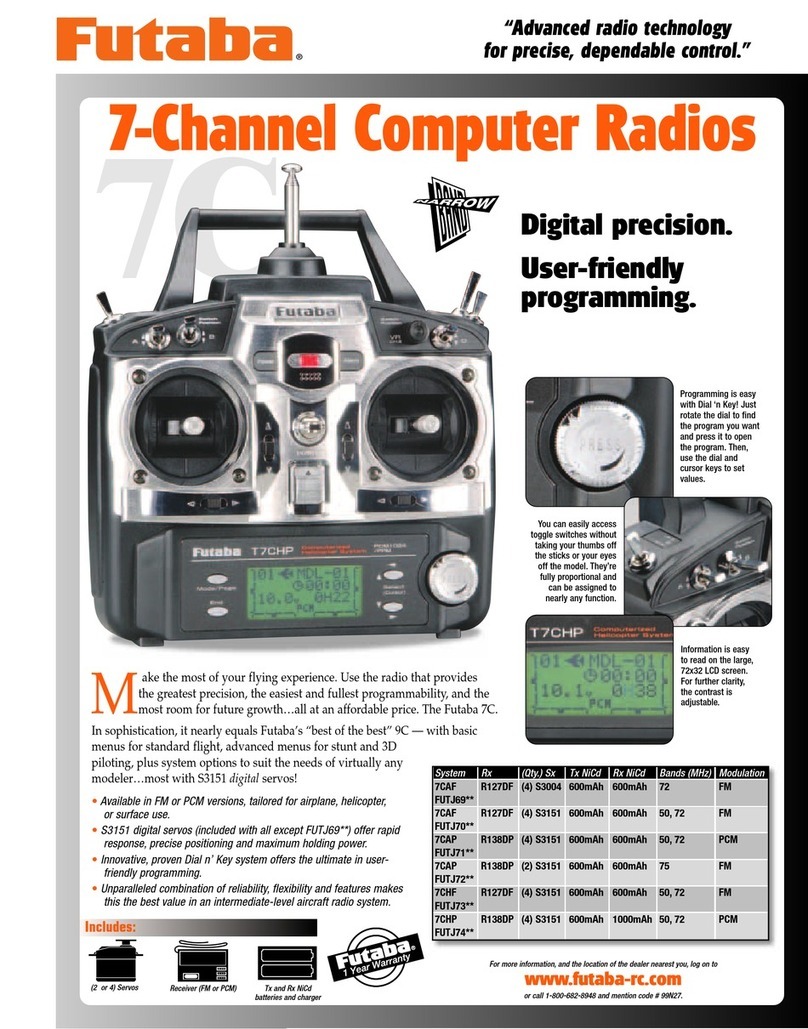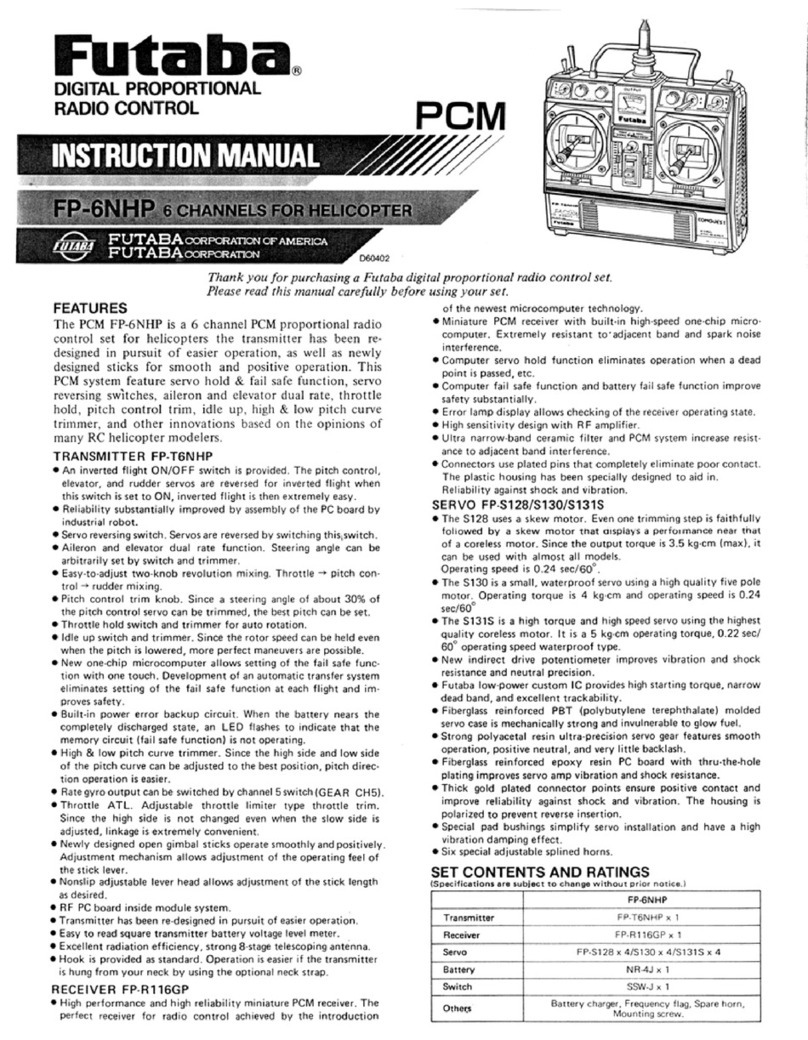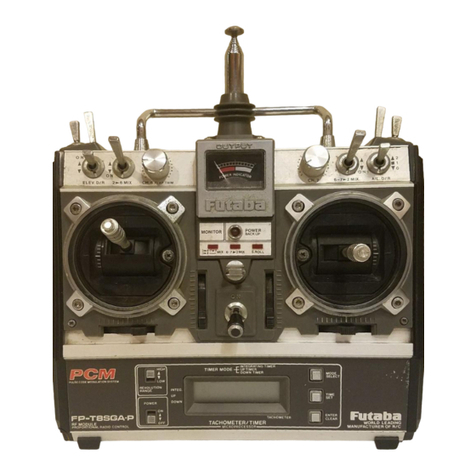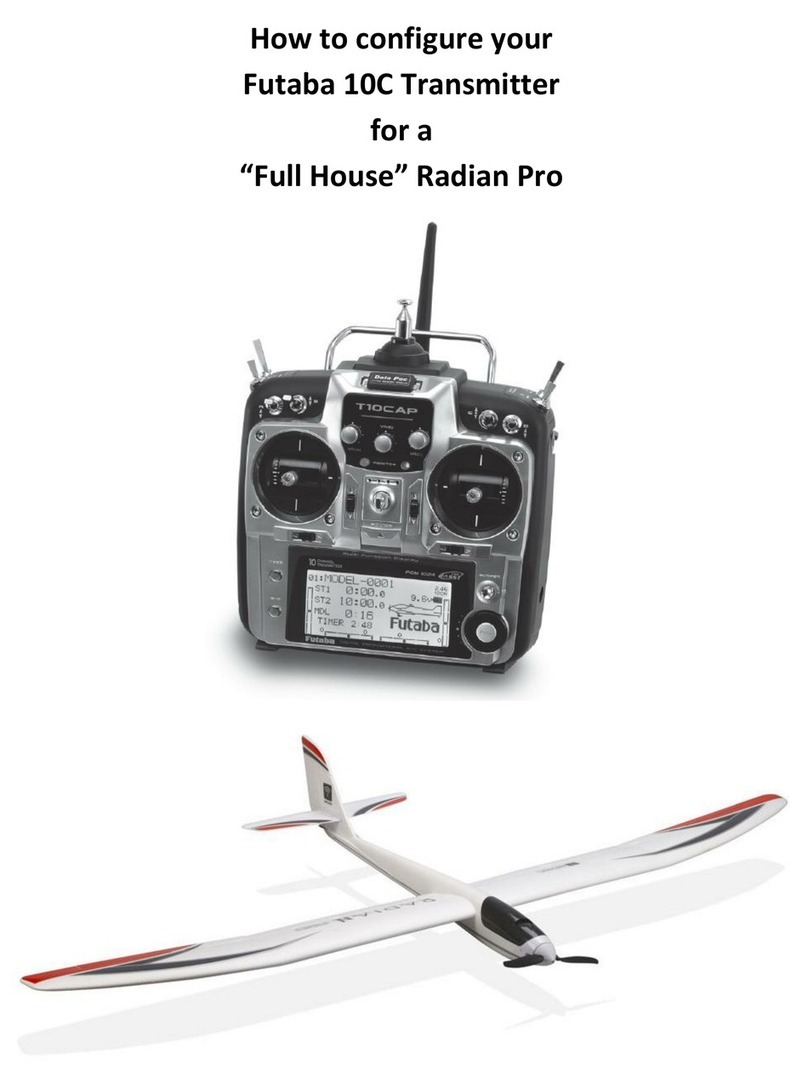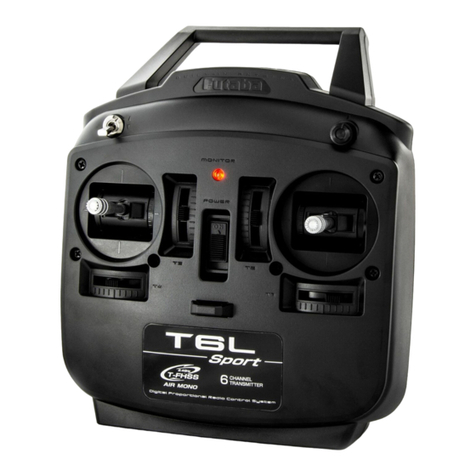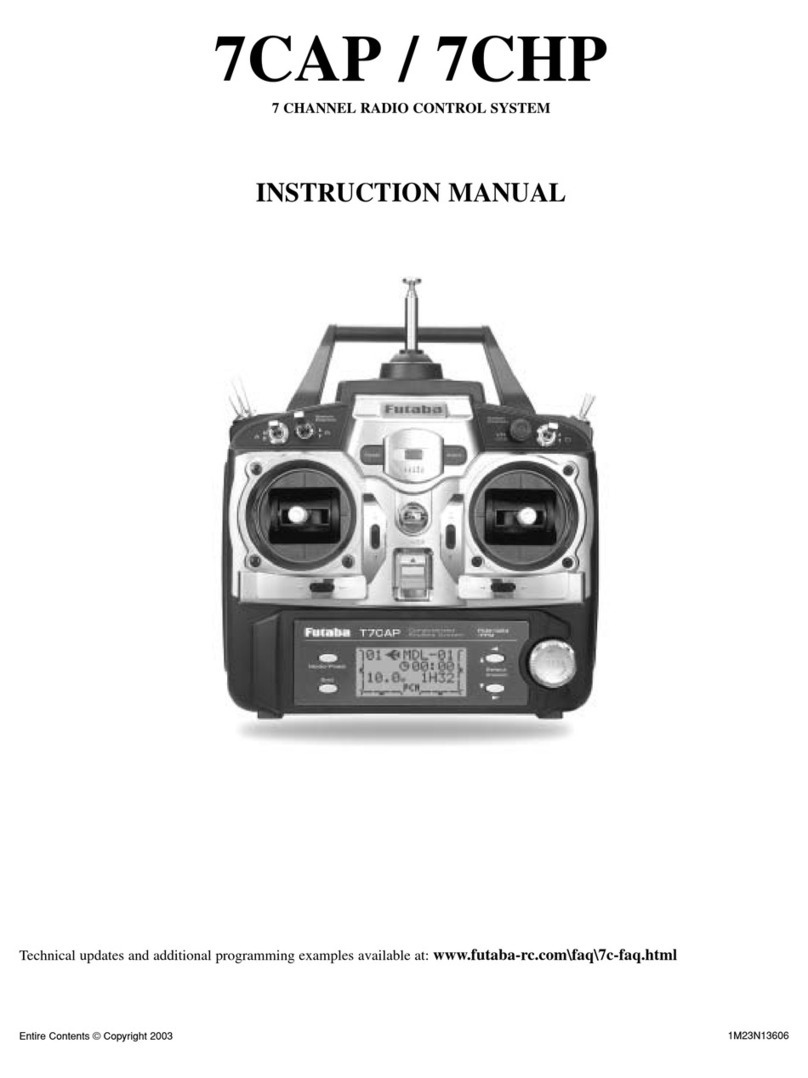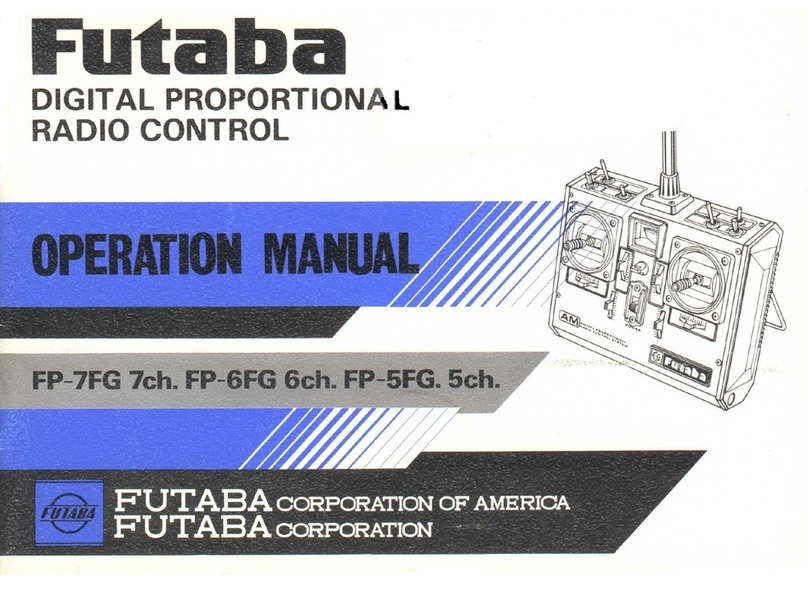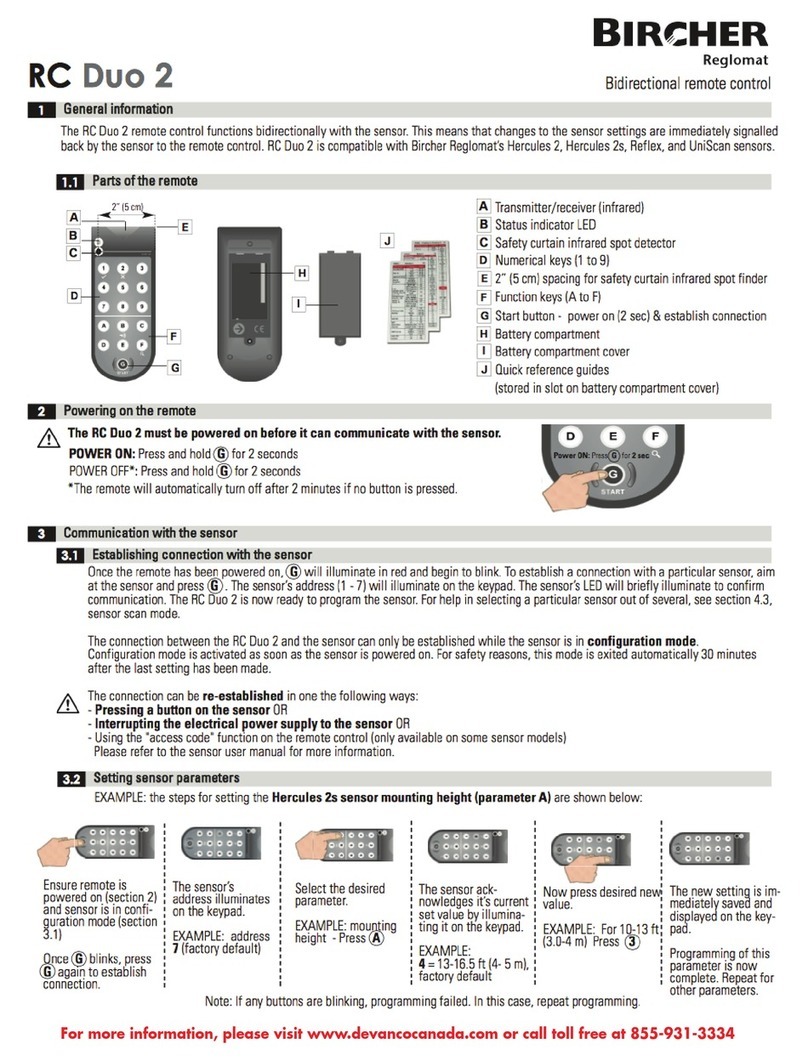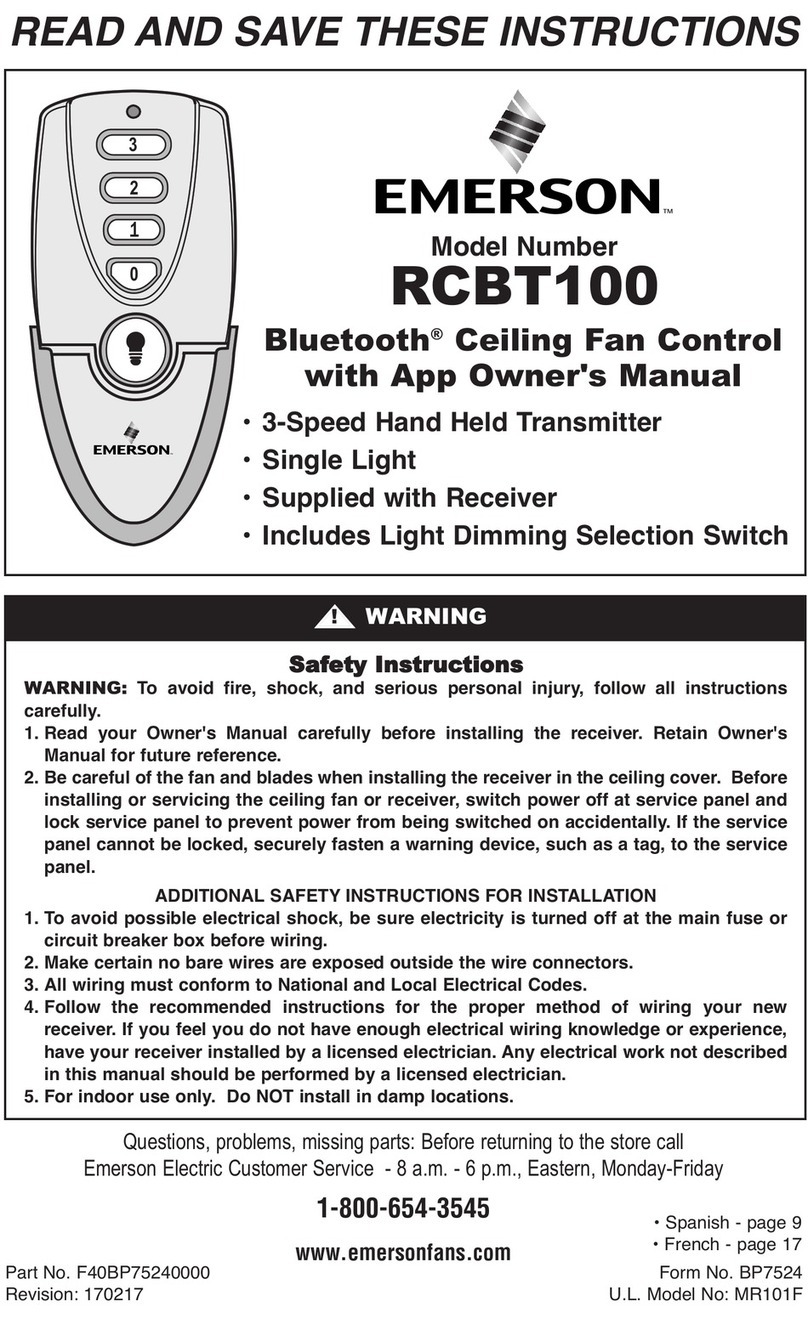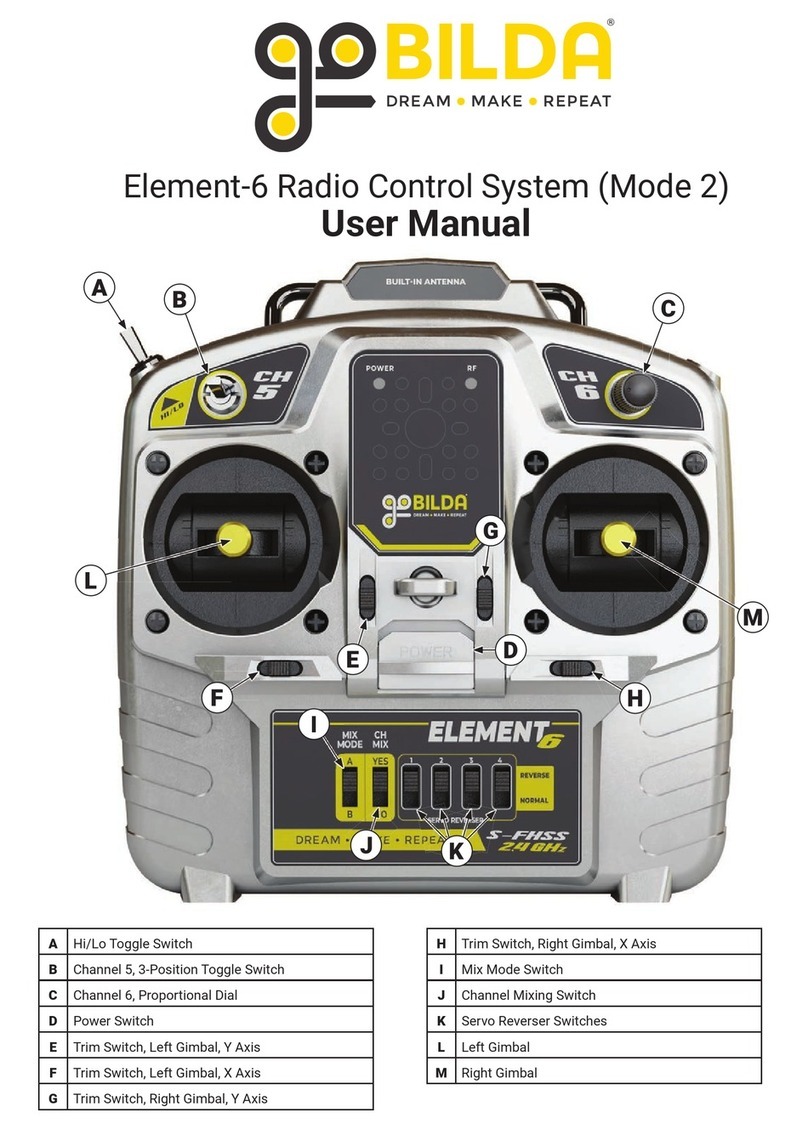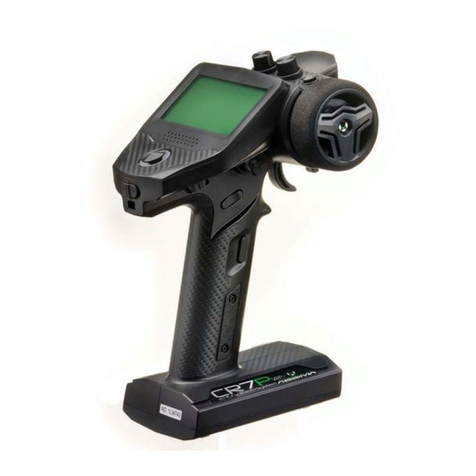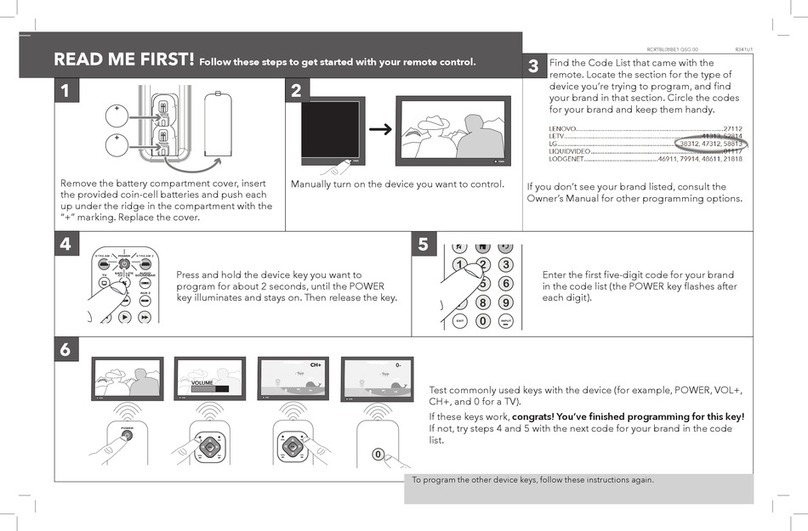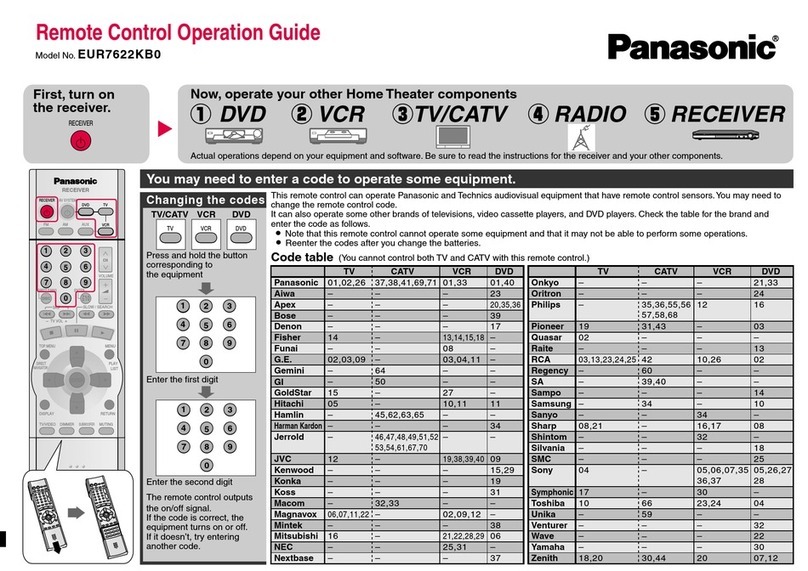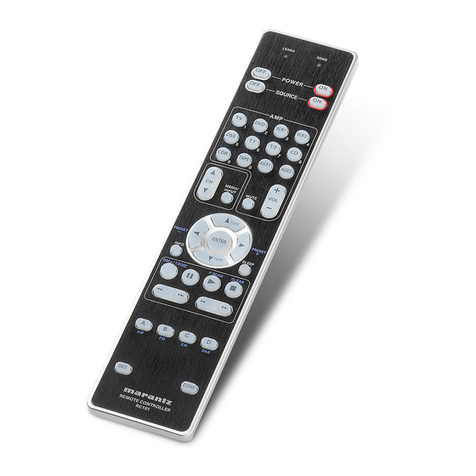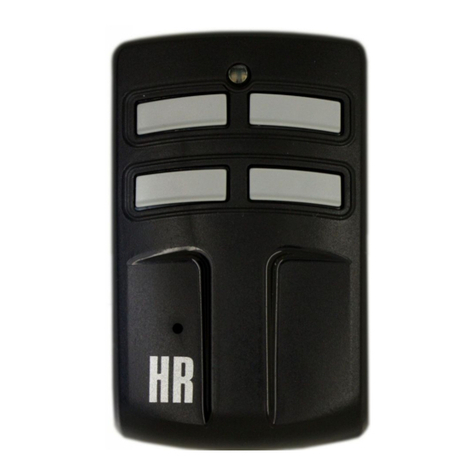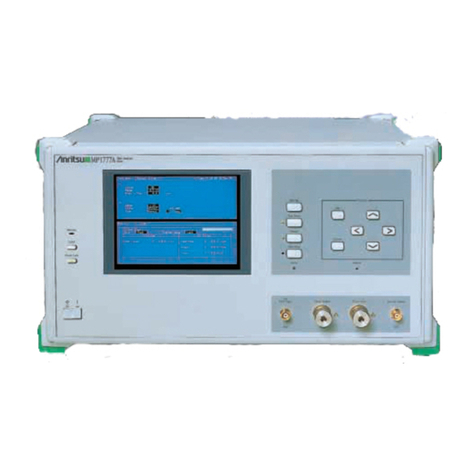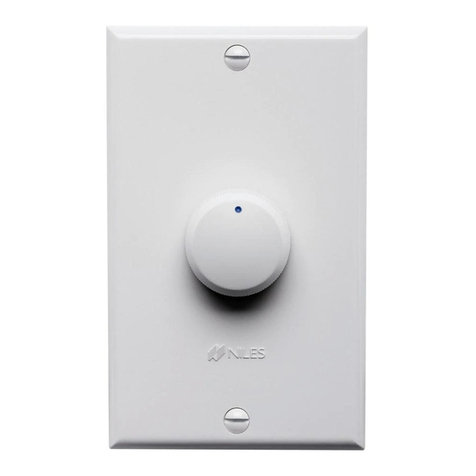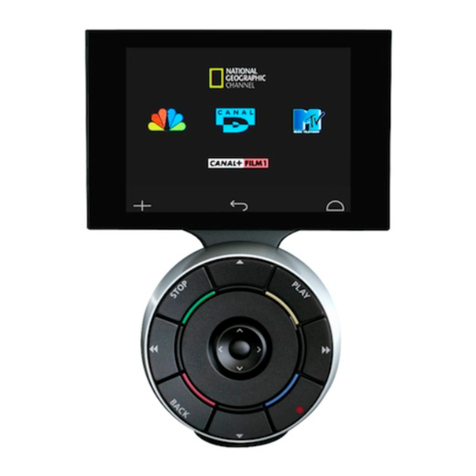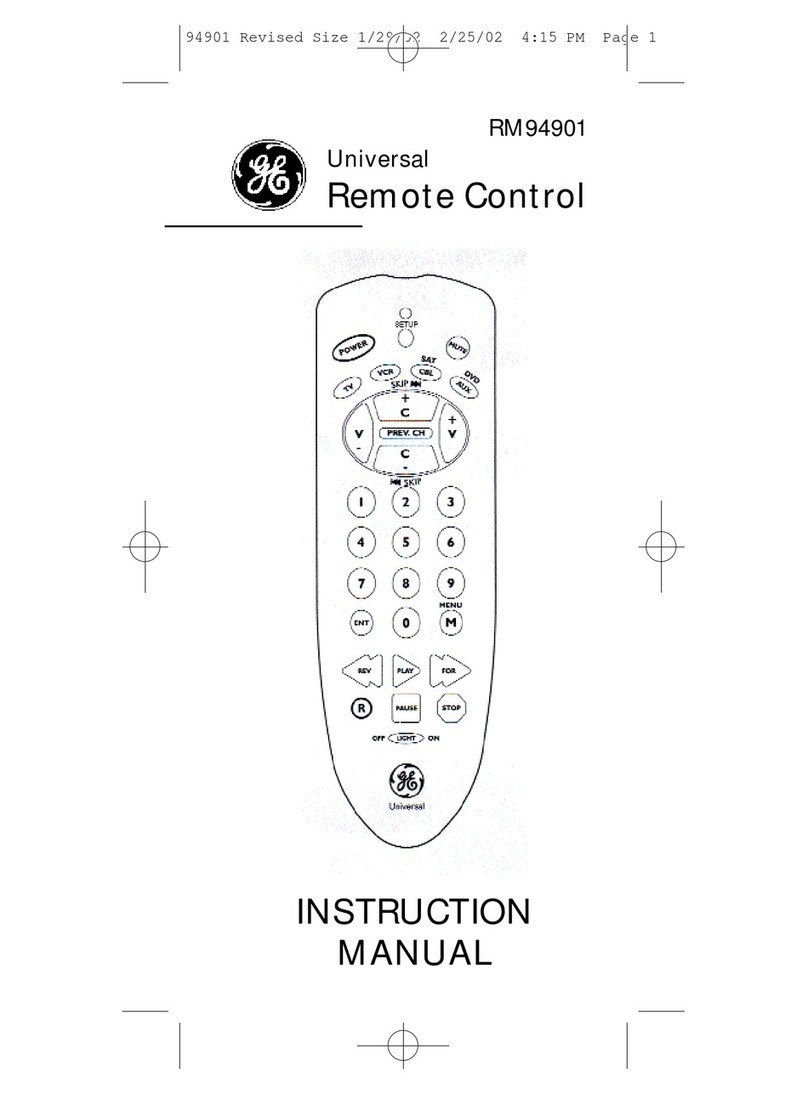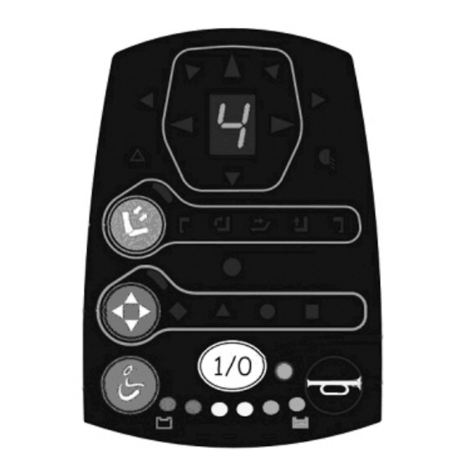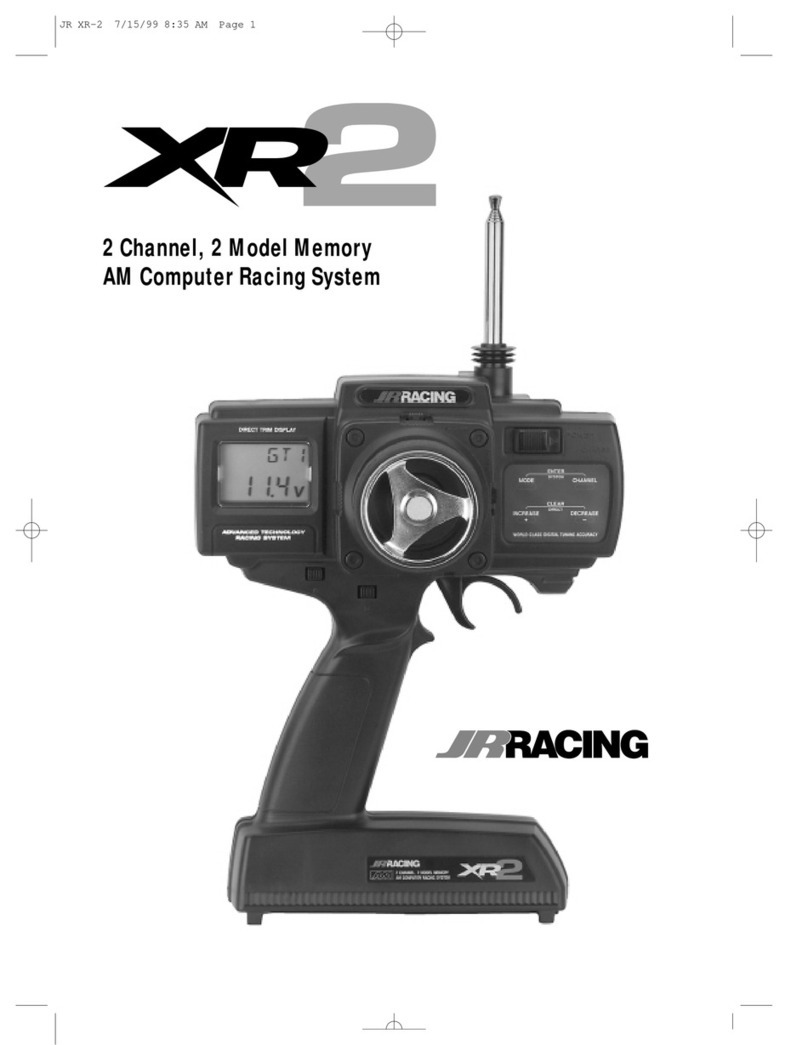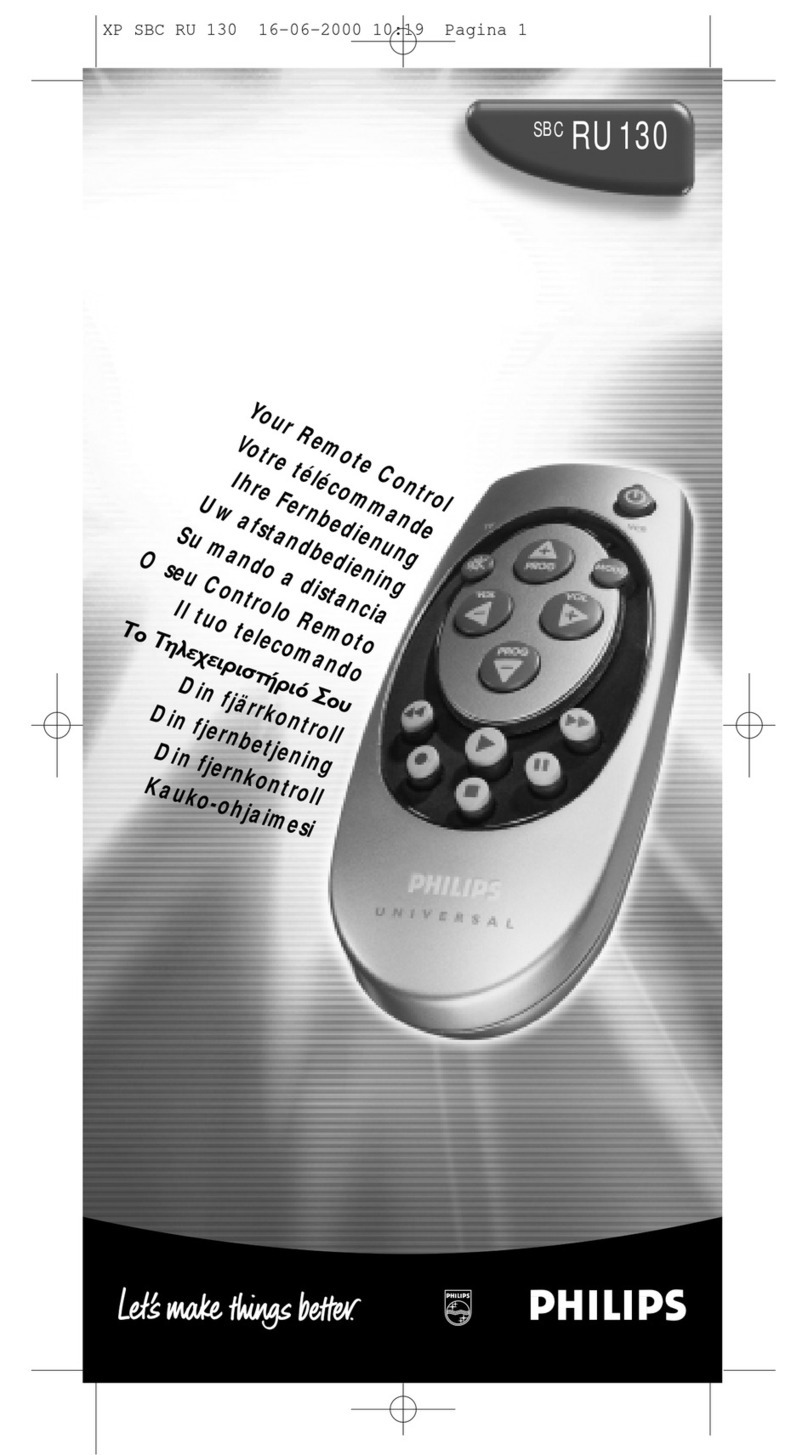2
Thank you for purchasing a Futaba 7PX-2.4GHz system.
Before use, read this manual carefully in order to use it safely.
After reading this manual, store it in a safe place.
IN NORTH AMERICA
Please feel free to contact the Futaba Service Center for assistance with operation and programming. Please
be sure to regularly visit the 7PX Frequently Asked Questions web site at www.futaba-rc.com/faq/. This page
includes extensive programming, use, set up and safety information on the 7PX radio system and is updated
regularly. Any technical updates and US manual corrections will be available on this web page. If you do not
nd the answers to your questions there, please see the end of our F.A.Q. area for information on contacting
us via e-mail for the most rapid and convenient response.
Don’t you have Internet access? Internet access is available at no charge at most public libraries, schools, and
other public resources. We nd internet support to be a fabulous reference for many modelers as items can be
printed and saved for future reference, and can be accessed at any hour of the day, night, weekend or holiday.
If you do not wish to access the internet for information, however, don’t worry. Our support teams are avail-
able Monday through Friday 8-5 Central time to assist you.
Application, Export, and Modication
1. This product may be used for models only. It is not intended for use in any application other than the con-
trol of models for hobby and recreational purposes.
2. Exportation precautions:
(a) When this product is exported from the country of manufacture, its use is to be approved by the laws gov-
erning the country of destination for devices that emit radio frequencies. If this product is then re-exported
to other countries, it may be subject to restrictions on such export. Prior approval of the appropriate govern-
ment authorities may be required. If you have purchased this product from an exporter outside your country,
and not the authorized Futaba distributor in your country, please contact the seller immediately to determine
if such export regulations have been met.
(b) Use of this product with other than models may be restricted by Export and Trade Control Regulations,
and an application for export approval must be submitted.
3. Modication, adjustment, and replacement of parts: Futaba is not responsible for unauthorized modica-
tion, adjustment, and replacement of parts on this product. Any such changes may void the warranty.
OUTSIDE NORTH AMERICA
Please contact the Futaba importer in your region of the world to assist you with any questions, problems or
service needs. Please recognize that all information in this manual, and all support availability, is based upon
the systems sold in North America only. Products purchased elsewhere may vary. Always contact your re-
gion’s support center for assistance.
FOR SERVICE ONLY:
Futaba Service Center
3002 N. Apollo Drive, Suite 1
Champaign, IL 61822
Phone: 217-398-0007
www.futaba-rc.com/service.html
E-mail: futabaservice@hobbico.com
FOR SUPPORT :
(PROGRAMMING AND USER QUESTIONS)
Please start here for answers to most questions:
www.futaba-rc.com/faq/
Fax: 217-398-7721
Phone: 217-398-8970 option 2
1M23N32602_7PX_E.indb 2 2017/08/02 14:16:56
